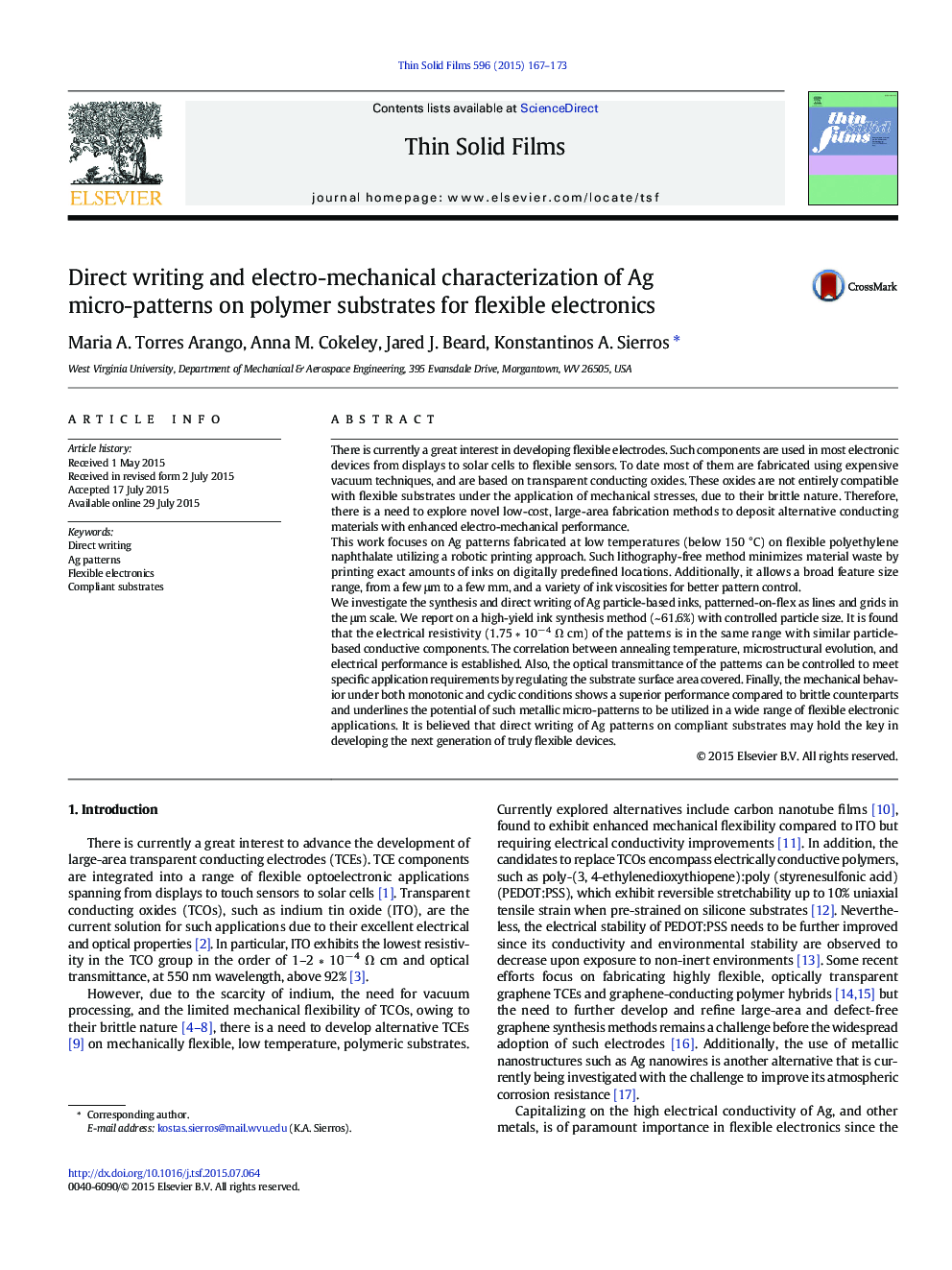| Article ID | Journal | Published Year | Pages | File Type |
|---|---|---|---|---|
| 1664522 | Thin Solid Films | 2015 | 7 Pages |
•Ag nanoparticle synthesis method with high yield and controlled particle size•Low temperature direct writing of conductive Ag patterns on large-area PEN•Ag printed patterns on flex exhibit reliable cyclic mechanical behavior
There is currently a great interest in developing flexible electrodes. Such components are used in most electronic devices from displays to solar cells to flexible sensors. To date most of them are fabricated using expensive vacuum techniques, and are based on transparent conducting oxides. These oxides are not entirely compatible with flexible substrates under the application of mechanical stresses, due to their brittle nature. Therefore, there is a need to explore novel low-cost, large-area fabrication methods to deposit alternative conducting materials with enhanced electro-mechanical performance.This work focuses on Ag patterns fabricated at low temperatures (below 150 °C) on flexible polyethylene naphthalate utilizing a robotic printing approach. Such lithography-free method minimizes material waste by printing exact amounts of inks on digitally predefined locations. Additionally, it allows a broad feature size range, from a few μm to a few mm, and a variety of ink viscosities for better pattern control.We investigate the synthesis and direct writing of Ag particle-based inks, patterned-on-flex as lines and grids in the μm scale. We report on a high-yield ink synthesis method (~ 61.6%) with controlled particle size. It is found that the electrical resistivity (1.75 ∗ 10− 4 Ω cm) of the patterns is in the same range with similar particle-based conductive components. The correlation between annealing temperature, microstructural evolution, and electrical performance is established. Also, the optical transmittance of the patterns can be controlled to meet specific application requirements by regulating the substrate surface area covered. Finally, the mechanical behavior under both monotonic and cyclic conditions shows a superior performance compared to brittle counterparts and underlines the potential of such metallic micro-patterns to be utilized in a wide range of flexible electronic applications. It is believed that direct writing of Ag patterns on compliant substrates may hold the key in developing the next generation of truly flexible devices.
